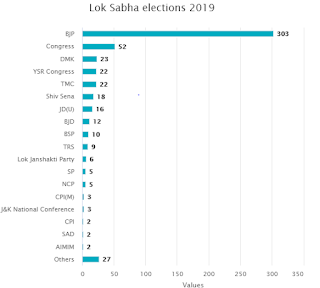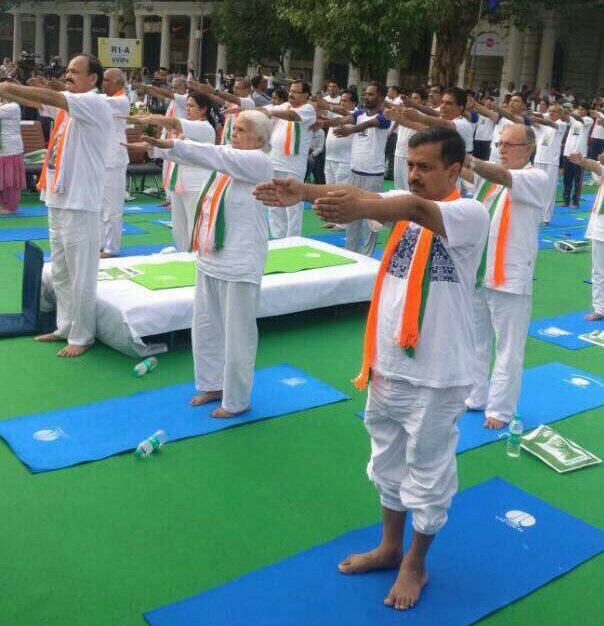Education doesn’t equate to wisdom and intellect is not
a mere product of intelligence.While education and to some
extent intelligence, are necessary conditions to acquire knowledge, these are
far from sufficient conditions. Penchant for knowledge and a commitment to
curiosity unconstrained by convention leads to true wisdom. “We are
faced with the paradoxical fact that education has become one of the chief
obstacles to learning and freedom of thought” once said the inimitable
Bertrand Russel.
 |
| Abhigya's Conscience Channel |
One such baffling paradox is the curious case of
child phenomenon Abhigya Anand, a social media sensation who happens to pop up
ubiquitously in all my social networks every week. A child prodigy: claimed by
many, incarnation of Saraswati- The Goddess of Knowledge, proclaim others. A
saviour of Sanatana Dharma - the eternal wisdom of India, a modern day
Parashara and 21st century Vasishta are his other unending
eulogies.His videos on the Conscience
channel range from sermons on Ayurveda to Astrology and his
lectures cover inefficiencies of banking institutions, undercurrents of bullion
markets, Vastu, vaccines,vulnerabilities of 5G and many more. His charming
innocence and his innate ability to explain multi-disciplinary subjects point
to the boundless potential of this lovely boy, but the paradox lies in the fact
that Abhigya although very educated is ill-advised and ill-informed.
 Most, if not all, of Abhigya’s freewheeling
lectures are on matters beyond his knowledge, maturity and age. More
worryingly, they are driven by pseudoscience and his indulgence in Astrology
the most troubling of all. There are child prodigies with similar potentials
and Abhigya is clearly infinitesimally intelligent than his preadolescent
peers, so one must tread carefully should any objections to his style, content
and tactics are motivated by my jealousy and spite. So I shall refrain from
criticizing Abhigya from here on, on the contrary, I sympathize that such an
intelligent and gifted child has been indoctrinated and brought up within the
confines of spiritualism, mysticism, theology and superstition by his parents
who exalt in his upbringing, mostly through home-schooling.
Most, if not all, of Abhigya’s freewheeling
lectures are on matters beyond his knowledge, maturity and age. More
worryingly, they are driven by pseudoscience and his indulgence in Astrology
the most troubling of all. There are child prodigies with similar potentials
and Abhigya is clearly infinitesimally intelligent than his preadolescent
peers, so one must tread carefully should any objections to his style, content
and tactics are motivated by my jealousy and spite. So I shall refrain from
criticizing Abhigya from here on, on the contrary, I sympathize that such an
intelligent and gifted child has been indoctrinated and brought up within the
confines of spiritualism, mysticism, theology and superstition by his parents
who exalt in his upbringing, mostly through home-schooling.
No doubt, his parents are caring and meticulously
attentive and Abhigya and Abhideya- his equally talented sister, were trained
in Sanskrit, ancient texts, Indian classical music, were introduced to
technology and sciences, as many of his lectures on anatomy allude to. Most
of his videos tend to be astrological predictions based on Vedic Astrology,
evidently, what has not been taught to him are the concepts of
pratyaksa(evidence), anumana(scepticism) and aptavacana (peer review). Not only
are these the key foundations of modern science but also the foundations of
Samkhya shastra, one of the six schools of Indian philosophy.
 |
| Sadguru vs Abhigya |
Blinkered by bronze age mystical thinking, his
parents have failed to instil critical thinking and rationality, which attest
to their own weaknesses and poor Abhigya has been ushered into a world of
instant stardom. Thanks to the dynamics of social media, Abhigya became a
Youtube celebrity competing with the likes of Sadguru in the marketplace of
mysticism and spirituality. Sadguru is not a complete novice when it comes
pseudoscience, he has tiptoed on it at various times in many of his talks, the
difference is only one of a degree. But when Sadguru rightly called out the
futility of Abhigya’s Covid-19 predictions, Abhigya retorted back
calling Sadguru a SadGuru. Notwithstanding his short
comings and lack of scientific rigour, Sadguru is reasonably well versed in
Indian philosophy and an eloquent speaker. For Abhigya to have the conviction
to lock horns publicly with the Sadguru cannot be explained in any other way
than to presume that his reckless parents have forced him to condemn Saduguru
publicly with little afterthought.
Vidya dadati vinayam
vinayad yati patratam – Education leads to
humility, from humility arises character, says the Hitopadesha. Abhigya’s parents
have utterly failed in inculcating such humility in Abhigya, on the contrary it is common for some parents to compensate
their own shortcomings by reflecting on the accomplishments of their children.
Their insecurities may eventually lead to their children becoming narcissistic
themselves, constantly seeking out attention and approval, hallmark of many of
Abhigya’s videos. Once such video is a two-hour lecture by Abhigya at IIM comprising
of mishmash of conspiracy theories and hodgepodge of random internet musings
put together by his parents is a testimony to their lack of objective thinking
and scientific mindset.
Another similar mindset driven by insecurity
that is pervasive in our culture is that our Indian culture is sacred and
divine and that we are a blessed race. Partly driven by an uncritical
religiosity and lack of self-esteem, people tend to believe that our ancient
sages, the Maharishis, have bestowed the light of Vedic knowledge to the people
living south of Himalayas. Not to Peruvians of South America, nor Malawians of
Africa and definitely not to tribes of Central Asian steppes nor to the Eskimos
of Arctic. Moreover, they believe such divine knowledge only imparted to our
ancestors, comprises of advanced scientific theories: Medicine, Astronomy,
Cosmology that matches and even exceeds achievements of modern science, which
leads me to the followers of Abhigya.
 |
| Abhigya IIM Lecture |
Once they have invested much of their self-esteem
in such blind faith but the drudgery of life opens up to the ground reality of
toil, hardship and uncertainty, the reinforcement to their vacuous vanity calls
for a magical archetype. Abhigya is such an archetype: young, charming,
intelligent who fortifies their faith and preconceptions in Vedic Astrology,
Vastu and other mystical ideas. Abhigya is the archetypical little Sri Krishna
in their minds, and his subscribers barely question and, in many cases,
incapable of questioning the pseudoscientific theories that are being spouted
in his videos. His followers are not concerned with “what he says” but “what
he is”, Abhigya is a just a container that maintains their delusional
beliefs. As he matures into adulthood and his cuteness and novelty wears off,
his followers will flock to another mystic or a spiritual guru who bolsters
their magical thinking.
In the 17th century, Sir Isaac
Newton experimented in occult Biblical theories to decode the date of Judgement
day and spent many years muddling in the pseudoscience of Alchemy looking
for Philosopher’s stone, that turns any metal into gold. During the
Black Plague, Newton quarantined himself for two years and the same inquisitive
mind came up with Philosophiæ
Naturalis Principia Mathematica , Principle of Mathematics
that form the basis of Calculus, Gravitational theory and Newtonian physics
that launched the age of enlightenment and eventually led
humans to conquer the Moon. Thankfully, his works on Alchemy is forgotten and
confined to dustbin of history. Abhigya is certainly capable of becoming a
Newton, whether he continues to dabble in Astrology and Vastu like Newton’s
flirtation with Alchemy or sees the light of true science and knowledge is yet
to be seen.
The sooner this lovely child is unshackled from the
preconceived dogma of his followers and the myopic world view of his parents,
the sooner Abhigya will be able to fulfil his true potential.











